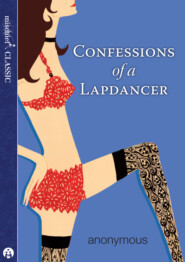По всем вопросам обращайтесь на: info@litportal.ru
(©) 2003-2025.
✖
On Nature: Unexpected Ramblings on the British Countryside
Настройки чтения
Размер шрифта
Высота строк
Поля
From Loch Leven brown trout are silver, small-headed with a peppering of black spots, the slightest iridescence of a purple haze along each flank. From the River Itchen they are deep, short, heavy-shouldered, the silver has blended with butter, the black spots have swelled and along each flank, like a series of holes peeping through to a furnace within, is a strafing of the brightest vermilion. From Lough Corrib I’ve seen trout with sides like coal dropped in sand; from peaty Scottish lochs trout like slabs of dark chocolate. And there’s a river I know in Dorset where every fish you catch will have an orange adipose fin – like a candle flame alight underwater. These limitless, painterly riffs around the theme of trout are one reason behind my obsession. They are so bloody pretty, and no two trout look exactly the same: this fact is well known to anglers, who’ll recognise fish across the years from the spot patterns on their gill covers. There are ancient brownies in my local stream down the road that I must have caught and photographed two, three times. But in that variety the trout is only responding to its environment, to whether the water is dark or clear, the bed of the stream sandy or rocky. We can see this across these cruder dimensions, though the trout kaleidoscopes well beyond our ability to understand why. In some chimerical way the narrative of the landscape itself is refined and condensed and accreted in trouty hieroglyphics. Limestone, chalk, slate, shale, sandstone, machair, granite, clay: the surface of these islands grades like a thick slab of plywood tilted on a plane, sanded, chopped and buckled and the language of these rocks is printed on the skins of trout. Would that not be reason enough for a lifelong of chasing?
Those Castlecove fish – I sketched many of them before I ate them for breakfast – had butter bellies, green sides, black backs. They looked like the hillside that grew them. I couldn’t imagine how fishing could get much better than it was then, crawling through the snags of gorse and overgrown trees, slipping over boulders, pulling those pretty fish from dark pools that ran like Smithwicks bitter, and cycling home at the end of it all with the best half-dozen in a satchel. In many ways it hasn’t. More than that, though, fishing for trout with a worm in the Castlecove stream taught me some of the big things I needed to learn about catching trout. Most of all, how to get close to them and where they lay. Two intertwined ideas I would have done best never to forget, though forgotten they were and often are once the angler demands space for his fly-casting and derives too much satisfaction from how well it is going. Trout, I found out then and remember again from time to time, are best caught or tried for under your feet, even with a fly rod. And if you go at it slowly enough that’s often where you’ll find them.
You can’t cast far with a free-running lob-worm. All you have, to pull the line off the reel, is the weight of the worm. And you must cast it with a gentle pendulum swing or it will fall off the hook. You’ll struggle to get it more than twelve feet up the river, and an unweighted worm sinks only slowly through the water. If the stream is fast and you hold the worm in the rush of water it will be back past you in seconds, skimming on the surface at the end of a taught line and no trout on earth will take it. So try again, only just to the side of the faster current this time, using the worm and the thin thread that attaches you to it to search for the back eddies and the slips of current between the downstream flow and its upstream counterpart, or the sometimes motionless tongues of water, or the small vortices that will pull the worm down to where the fish are. Only a worm at the mercy of the currents – like a kite in the breeze – can teach you quite so quickly how to feel and read those currents. You must keep the line taut enough that you will see a bite, but not so taut that you’re dragging the worm around unnaturally. Soon enough your rod top is tracing every nuance in the flow, you’re feeling the river as if you’re part of it, and then . . . tap, tap, tap. A trout is knocking on the door. Where was it? You’ll have noticed without noticing. Each time a trout takes, and all the times one doesn’t, you’ll learn a little bit more about where they lie and where they don’t lie. You’ll start to read the water, to see the way a river flows across its crests and hollows, weeds and stones, along the corrugated edges, the riffles and undercuts, and you’ll start to translate what you see into an idea of where the fish are. The river becomes a language, and that language – admittedly with strange local dialects – is the same for every river: for the moorland stream, for a chalk stream, for a lowland brook in a vale of clay; and once you start to look at them as very big pools on a river, the language is not unfamiliar on a loch or a lough too.
Most universally? The trout are in the seams: not in the rip, nor in the dead water to the side of it. The trout lie between the two. This seam between the tongue of flow into a pool and the dead water to the side of it is the most obvious of all. But think about the margins between fast water and slow across the full three dimensions of the channel: along the bed, along the edges, at the tails of pools, in the whorls off fallen timber or boulders. These seams are the pockets of shelter from which a trout can easily dart into the flow to feed and back again. Think seams, pockets and margins and you won’t be far from the fish.
I learnt how to cast a fly eventually and graduated from bicycle to ancient VW Polo and drove over to Kerry every summer for years, camping or hiring caravans near Water-ville to haunt the little mountain loughs and streams above Lough Currane. No trees, see? Unlike Castlecove, a bit of space to wield a fly rod. I have pinned to the wall above my desk the Suirbheireacht Ordonais No.20 Dingle Bay bought on one of those hols in Co. Kerry and it’s there to remind me of these places: the stream full of engine blocks and one other spot in particular: a necklace of loughs that curls back into the mountains above it – into the foothills of Macgillycuddy’s Reeks. We’d park at the end of the road, turn our back on Lough Derriana and follow a little stream up into the valley above. Flat ground at first, a peaty bog crossed by fences hanging with sheep’s wool and plastic, then a moraine of mossy, hollow land strewn with boulders, the stream coming and going, above ground, below it, the lough forever over the next brow – until finally we reached it. Tooreenbog was in most lights an almost melancholic body of water. Though it was full of fish, had we not walked beyond it the first time we might never have gone back. But at its head was a waterfall that seemed to invite an exploration of what lay beyond. The valley curled away, its end beyond sight, but with some sort of siren call about the place. We heard it and followed and found over every ridge a new lough, smaller than the last, each one pocked with rising trout and dripping with silence, until we reached the end, a sheer wall of rock 500 feet high, split by a waterfall dropping off the plateau above to vaporise against fern-covered rocks below. The final lough, which doesn’t have a name, was pressed up hard against this slope and its windless surface reflected the place like glass. It is a cliché of rose-tinted memory, but here it was true: with a team of three flies I could bet on three to the cast in those loughs, and especially below the waterfall in Tooreenbog.
A good place to practise, then. Because though you can learn to cast a fly rod on a lawn it is much more fun if keen and hungry trout are there to reward your efforts. A lough is good for other reasons: you can find a shore to put the wind at your back; the hungry fish won’t mind a muffed cast; the still water gives you time to think. Like everything in fishing, casting a fly rod can get as complicated as you want it to. It can certainly become an end in itself. And above all a brown trout lough will teach you this: like on the stream at Castlecove, if you’re quiet and slow you don’t have to cast very far. The trout in a small mountain lough are most often feeding right along the edge: if you stand high on a rock and cast at the horizon (which, when you get good at casting, you will definitely spend several years doing) they’ll move just beyond reach. If you sneak low and quiet and fish along the shore-line you’ll catch a hat-full. So, if we stick with the idea that casting is about catching, it is best kept short and accurate and best kept simple. The casting stroke is this: nine o’clock on the forward stroke, half-twelve on the back. Pull out three yards of line and swish the rod back and forth between these two points. You will have already done it wrong. I said twelve-thirty: that’s just past your ear. The rod must never go further back than this! You think it didn’t? It did. And again, just now when you tried to prove it didn’t. Okay. Do this for an hour, imagining that I am there to tell you ALL THE TIME that you brought the rod too far back. After a while, if you believe me, you might begin to get it right. You’ll know when you have because the line will straighten along the ground in front of you, instead of falling in a heap. By the way, you’ll be taking it too far back for two reasons: first, you are flopping the wrist; second, you’ll be waving your elbow around. Tuck the elbow in at the hip. Don’t break the wrist.
When you’ve finally got that right try the same again with a longer line: it’ll probably go wrong again. You’ll compensate for the added length by making those same mistakes you started with and you’ll add to the mix the idea that if you swish really quickly it will help. In fact you need to slow down. Stop the rod at twelve-thirty, remember the wrist, remember the elbow, and now give the line a fraction of a second longer to straighten out behind before you bring it forward again. Good.
It probably goes okay sometimes and not so okay others. And the weird thing you’ll have noticed is that the harder you try the worse it goes. There doesn’t seem any natural way out of this. Of course I need to TRY HARD TO GET ALL THIS BLOODY LINE OUT THERE. Thing is, with fly casting, you’re not really doing the work: the rod is. Trying harder, swishing it faster, grunting, getting in a fizz . . . it’s all a bit like flapping your arms to get the plane to take off.
Casting a fly rod is all about timing, not strength or effort, and the harder you try the more you’ll lose the timing. Slow down. Chillax. The rod is a spring and you load it with the inertia of the fly line; it moves forward and stops and uncoils its energy down the line; you pull back and load it again, and so forth. Unless you’re loading and unloading the rod you’re not doing anything. So the best image I can leave you with is this: imagine you’ve got a brick on roller skates, attached to a thin string. You have to move the brick forwards and backwards. If you yank the string it will break, or maybe the brick will fall off the skates. If you go gently and get the timing right it will work just fine.
Anyway, that was all on the toughened west coast: small brownies, four to the pound and hungry as hell. When I got a job teaching Art to school kids I moved to Dorset and fell inside chalk-stream country. Now the fishing was really tricky. Chalk streams rise from underground, feeding cool, clear and constant flows to lush valleys in which everything grows – fat trout and the fat flies them make them so – to an abundance. Chalk streams are the origin of dry-fly purism, the idea that educated trout develop OCD not only about which fly they’ll eat, but also about exactly which stage of the insects’ eclosion they will fixate on. And sometimes it really does work like this. It can be a fun puzzle to unlock when it does. Most of the time, though, these pampered trout are as catholic in their diet as any other. The fish you thought was taking only blue-winged olives will have beetles, caterpillars and gnats in its belly. What chalk-stream trout do have, though, is an enhanced sense of caution. All trout are cautious, constantly offsetting the need to eat against the desire not to get eaten. But the more there is to eat the higher trout set the barrier against being fooled, the keener their already acute awareness of what looks natural and what doesn’t. In fly fishing that known acuity on the part of the fish translates most often into this: an angler’s obsession with fly pattern. Wrongly. The wrong fly presented naturally will get eaten way, way, way more often than the right fly presented unnaturally. And natural presentation of the fly is all about understanding the currents.
Back to Castlecove. The worm on the end of a short line has taught you to feel the river.
But now the fly on the end of a longer line will feel, at first, like playing a guitar in gloves. Though we can impart some control to it, the fly line won’t move like the top of your rod did when you were learning how to fish with the worm. Once cast it lies more or less inert on the water, prey to whatever the flows are doing along its length. And that is unlikely to be the same as what the water is doing around the fly. The river might be moving slowly under the fly line, but quickly under the fly. Or the other way about. You’ve already felt how the river is a marbled conflict of currents. This conflict between the way the water pulls at the fly line and the fly is called drag: the way the fly is pulled, sometimes to an infinitesimal degree, so that it moves unnaturally on, or within, the water.
Drag is everything in fly fishing. Drag is what stops most fish from taking your fly.
Though I started to understand this in Castlecove, it’s taken me thirty years to truly get it. Every season scales fall from my eyes and I remember all over again. If you’re casting at a fish that just will not take the damn fly, though it keeps on rising and the pattern looks about right (I’ll get to what that means later), eight times out of ten it’s drag that is screwing you up. Even if you can’t see it . . . that’s what it is.
It would be impossible to summarise how you deal with drag. It is in itself as infinitely various as the river that imparts it. Drag is one of the beauties of fly fishing. It isn’t an enemy, so much as one of the things that makes the whole business so compelling. Don’t resent it, but do be aware of it and know that no matter what other bullshit you’ll be told about flies needing red eyes, and blue testicles, grey wings and eight tails, or what you’ll feel compelled to believe about how a new fly-rod or line or reel will unlock the door to better fishing, it’s all nonsense in the face of drag. A chasing after the wind. Master drag, my son (or at least start to understand it) and you will truly be an angler. Fish a dragless fly off the end of a garden cane and you’ll catch more trout than King Croesus and all the techno garb that his gold would have bought him.
Вы ознакомились с фрагментом книги.
Приобретайте полный текст книги у нашего партнера:
Приобретайте полный текст книги у нашего партнера:











